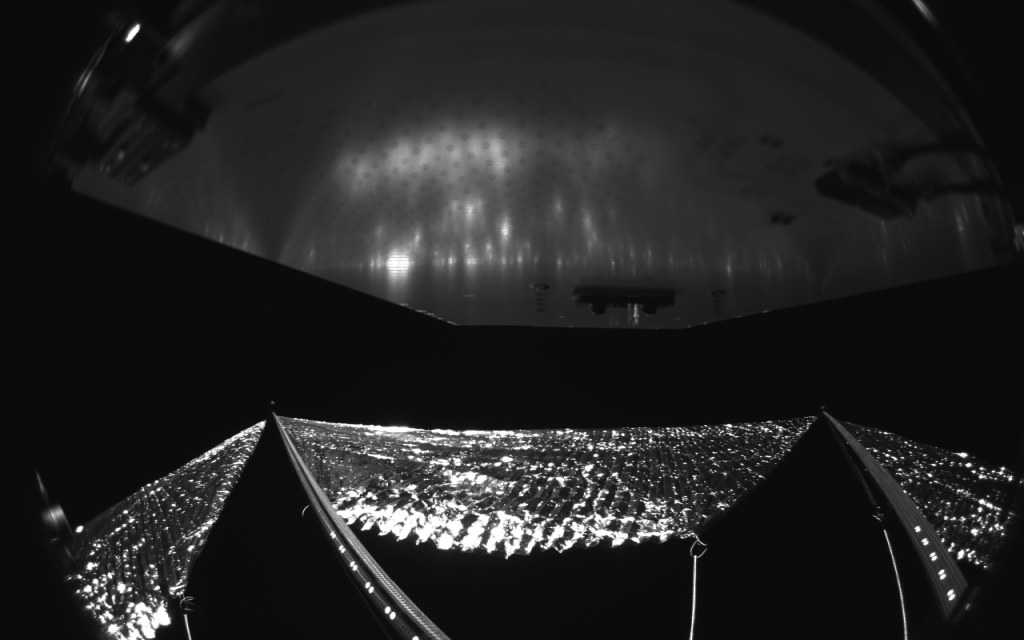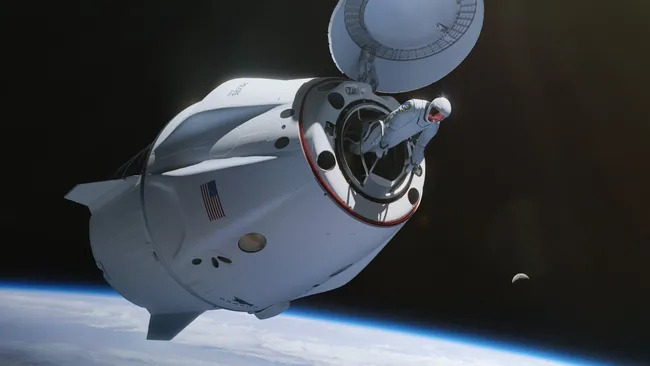How NASA’s ongoing solar sail experiment could impact future space travel

Image: NASA
Not since AWOLNATION’s hit has the world been so focused on a *musical break* SAIL.
NASA recently released the first photo of its Advanced Composite Solar Sail System spacecraft with the solar sail fully deployed (bottom👆), as it continues a mission that could have large implications for the future of long-distance space travel.
What are solar sails? A large flat sheet of material that takes advantage of how photons, aka light particles, have the ability to impart pressure on an object despite being massless, Space.com reports. They basically work like the sails on a pirate ship – but powered by the Sun instead of the wind.
Ready for the sci-fi part?
- In theory, a solar sail spacecraft can travel long distances in space without the need for additional fuel.
- And its stamina is enough to make the Energizer Bunny jealous. As Three Body Problem showed us, solar sails should enable crafts to reach very high speeds, since it can attain this fuel-less acceleration on an indefinite timescale (again, in theory).
Here comes the boom
NASA’s solar sail is about the size of a nine-bedroom apartment in NYC, measuring ~860 sq. ft.
And while the sail’s material is malleable and can fit relatively easily into enclosed spaces (like New Yorkers), the system required to rig the sail to the spacecraft can be a challenge to send into orbit due to its required size. NASA’s mission is testing a new boom system that can fit into an object roughly the size of an envelope before being unfurled in orbit, with the aim of conducting the deployment operation, then using it to inform the use of large-scale sails for future missions.
- NASA’s sail-deployed craft is currently tumbling through space, as engineers monitor the boom system. Once completed, the spacecraft’s altitude system will be engaged to stabilize the spacecraft and stop its tumbling.
👀 Follow along: NASA’s mobile app provides updates on when the solar sail is passing above users’ locations, so they can potentially witness an IRL view like this👇.

Image: NASA’s Advanced Composite Solar Sail System is seen orbiting Earth in this 13-second exposure photograph, Monday, Sept. 2, 2024, from Arlington, Virginia. Via NASA.
Share this!
Recent Science & Emerging Tech stories

Science & Emerging Tech
| September 3, 2024The AI chatbot war has entered a new phase: user growth
🤖 Tech giants have spent tens of billions of dollars building and upgrading AI chatbots – and now, they’re rushing to put those products in front of as many users as possible.

Science & Emerging Tech
| August 29, 2024Muscle experiment showcases the struggle of long-distance space travel
🌌💪 Recently, research from Stanford studying the effects of space on lab-grown muscle was published.

Science & Emerging Tech
| August 26, 2024SpaceX’s Polaris Dawn is attempting the first private spacewalk
🧑🚀 This week, SpaceX’s Polaris Dawn mission is scheduled to try something never done before: sending private citizens on a spacewalk.
You've made it this far...
Let's make our relationship official, no 💍 or elaborate proposal required. Learn and stay entertained, for free.👇
All of our news is 100% free and you can unsubscribe anytime; the quiz takes ~10 seconds to complete